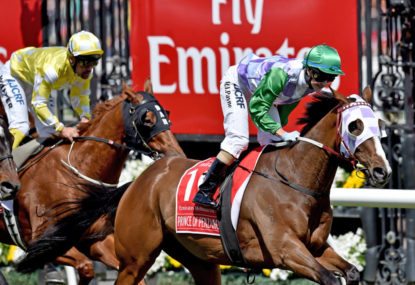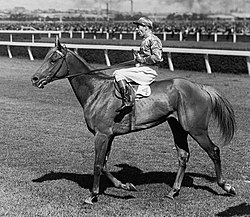How Did The Melbourne Cup Start
Databases for Academic Institutions. Research databases are key resources for every college or university library. Whether completing a dissertation or working on a freshman-level humanities project, students will benefit from the depth and breadth of scholarly, full-text content within our databases as well as ease of access and search functionality. The Melbourne Cup was introduced in 1861 by the Victorian Turf Club to trump the success of Victorian Jockey Club races such as the Two Thousand Guineas. As a handicap race, the Melbourne Cup introduced a level of speculation that the club hoped would.
MELBOURNE, Australia -- Michelle Payne became the first female jockey to win the Melbourne Cup on Tuesday when she rode the 100-1 outsider Prince of Penzance to victory in Australia's richest horse race.
Payne pushed the 6-year-old Prince of Penzance through a narrow gap in the straight and surged ahead of the Irish stayer Max Dynamite, ridden by Frankie Dettori, and New Zealand-owned Criterion, ridden by Michael Walker, for the victory.
Australian bookmakers Ladbrokes paid a winning dividend of AU$101 ($72) on Prince of Penzance, who is owned by six self-described 'small-fry owners': a podiatrist, two engineers, an IT consultant, a solutions expert and a producer. The owners paid AU$5,000 ($3,500) each to buy the horse.
Payne has ridden the horse throughout its career and said she always considered it a potential Melbourne Cup winner.
'This is unbelievable,' Payne said in a television interview immediately after the race. 'I laid in bed last night and I gave myself time to think and dream about it.
'This horse is awesome, what he's been through. Darren Weir is an unbelievable trainer to get him here like this today.'
Prince of Penzance has battled sickness and injury throughout its career but still managed to accumulate AU$600,000 ($428,000) in prize money to qualify for a start at the AU$6.2 million ($4.4 million) Melbourne Cup.
If it hadn't been for Payne -- the only female rider in the race and only the fifth in history to gain a Cup ride -- the horse would barely have been mentioned in prerace commentary. The Japanese-trained stayer Fame Game started as favorite but fell far behind in the 24-strong field and was unable to finish among the placings.
'When I won on this horse as a 3-year-old, he won here and I thought this is a Melbourne Cup horse,' Payne said. 'He just felt he would run the two miles out that strong but, far out, I didn't think he would be that strong.
'He just burst to the front, and I've never yelled so loud at a horse in all my life. This is everybody's dream as a jockey in Australia.'

Weir, who trains in the small town of Wangoom near Melbourne, praised Payne's outstanding ride against some of the world's best jockeys.

'I couldn't thank her enough,' he said. 'What a beautiful ride and what a great family.'
The Melbourne Cup, raced since 1861, is known as 'the race that stops a nation.' Australians traditionally stop work at 3 p.m. on the first Tuesday in November to watch the two-mile race at Melbourne's Flemington racecourse.
Last year, Australians bet almost AU$800 million ($571 million) on the race, and betting was expected to exceed that amount this year.
History of the Melbourne Cup

When the Melbourne Cup was first run in 1861, there were two organising committees controlling horse racing in Victoria, the Victorian Turf Club (1852) and the Victorian Jockeys Club (1857).
The Melbourne Cup was introduced in 1861 by the Victorian Turf Club to trump the success of Victorian Jockey Club races such as the Two Thousand Guineas.
As a handicap race, the Melbourne Cup introduced a level of speculation that the club hoped would attract more entries, and therefore higher prize money. The two competing organisations disbanded in 1864, before merging to form the Victorian Racing Club, which has controlled racing in Victoria and the Melbourne Cup ever since.
Although the Melbourne Cup today is well-known in Australia for being run on the first Tuesday in November, this hasn’t always been the case. The 1866 Melbourne Cup race was run on a Thursday, and in 1867 the Cup was run in October. It wasn’t until 1875 that the race was run on the first Tuesday of November.
What Time Does The Melbourne Cup Start And Finish

When Did The Melbourne Cup Start
Although the three-handled loving cup is widely recognised as the traditional cup design, this has only been the case since 1919. Before then the cups came in a variety of styles, with each year having a completely original design. Some years no trophy was presented at all. In fact, for the first few decades of the race, it was more common for no trophy to be awarded.